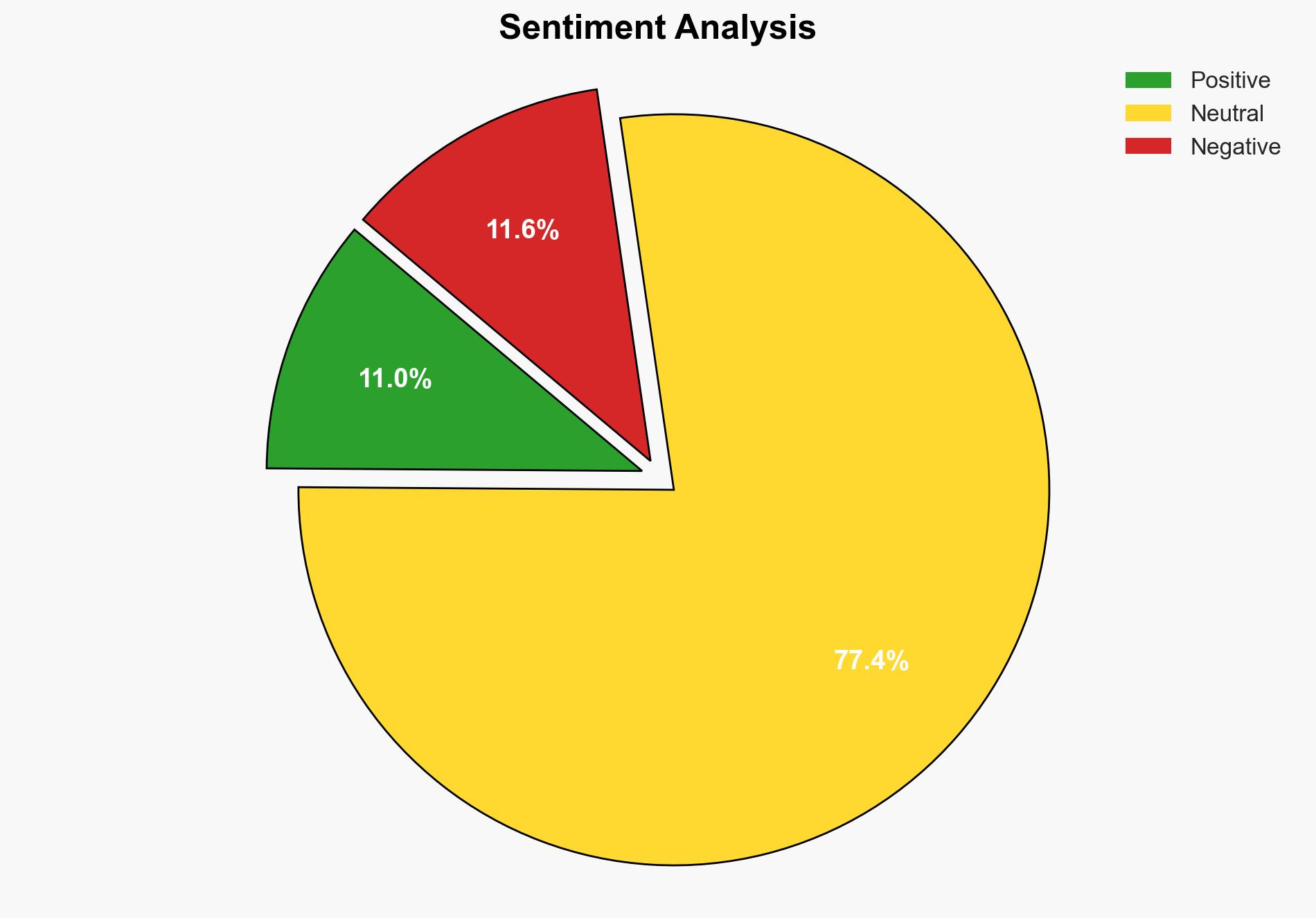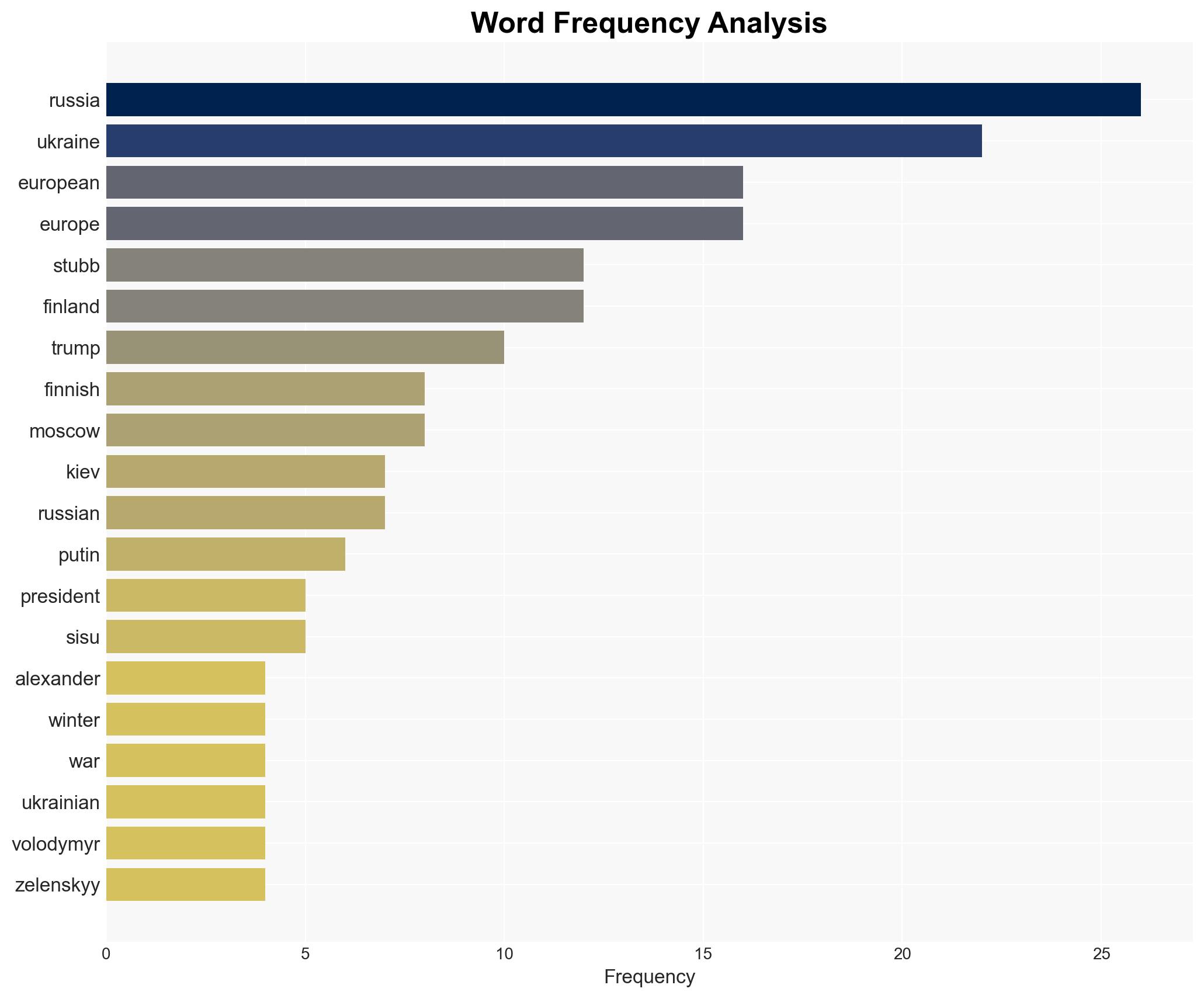Finland No ceasefire likely soon in Ukraine – Hurriyet Daily News
Published on: 2025-11-16
AI-powered OSINT brief from verified open sources. Automated NLP signal extraction with human verification. See our Methodology and Why WorldWideWatchers.
Intelligence Report:
1. BLUF (Bottom Line Up Front)
The most supported hypothesis is that a ceasefire in Ukraine is unlikely in the near term due to ongoing Russian aggression and European geopolitical dynamics. Confidence level: Moderate. Strategic recommendation: Increase diplomatic and military support for Ukraine while preparing for potential escalation in hybrid warfare tactics by Russia.
2. Competing Hypotheses
Hypothesis 1: A ceasefire in Ukraine is unlikely in the near term due to continued Russian military aggression and hybrid warfare tactics, coupled with insufficient European pressure on Russia.
Hypothesis 2: A ceasefire could be achieved if European nations, leveraging economic sanctions and diplomatic channels, successfully pressure Russia into negotiations.
Assessment: Hypothesis 1 is more likely due to the current lack of cohesive and effective European pressure on Russia and the ongoing military gains by Russia on the battlefield. The evidence suggests that Russia remains committed to its strategic objectives in Ukraine, and European unity on the issue is fragmented.
3. Key Assumptions and Red Flags
Assumptions: European nations have the capability and willingness to apply sufficient pressure on Russia. Russia’s strategic objectives remain unchanged.
Red Flags: Potential bias in European nations’ willingness to act decisively due to economic dependencies on Russia. Deception indicators include Russian propaganda efforts to destabilize European resolve.
4. Implications and Strategic Risks
Continued conflict in Ukraine risks further destabilization of the region, potential escalation into broader European conflict, and increased hybrid warfare tactics by Russia, including cyberattacks and disinformation campaigns. Economic impacts include disruptions in energy supplies and increased defense spending by European nations.
5. Recommendations and Outlook
- Increase diplomatic efforts to unify European response and apply coordinated economic sanctions on Russia.
- Enhance military support and training for Ukrainian forces to bolster defense capabilities.
- Prepare for increased hybrid warfare tactics by strengthening cybersecurity and counter-disinformation measures.
- Best-case scenario: European unity leads to effective pressure on Russia, resulting in a negotiated ceasefire.
- Worst-case scenario: Escalation of conflict with broader European involvement and significant economic disruption.
- Most-likely scenario: Prolonged conflict with intermittent escalations and continued hybrid warfare tactics by Russia.
6. Key Individuals and Entities
Alexander Stubb, Donald Trump, Volodymyr Zelenskyy, Vladimir Putin.
7. Thematic Tags
Regional Focus, Regional Focus: Europe, Russia, Ukraine
Structured Analytic Techniques Applied
- Causal Layered Analysis (CLA): Analyze events across surface happenings, systems, worldviews, and myths.
- Cross-Impact Simulation: Model ripple effects across neighboring states, conflicts, or economic dependencies.
- Scenario Generation: Explore divergent futures under varying assumptions to identify plausible paths.
Explore more:
Regional Focus Briefs ·
Daily Summary ·
Support us
·





